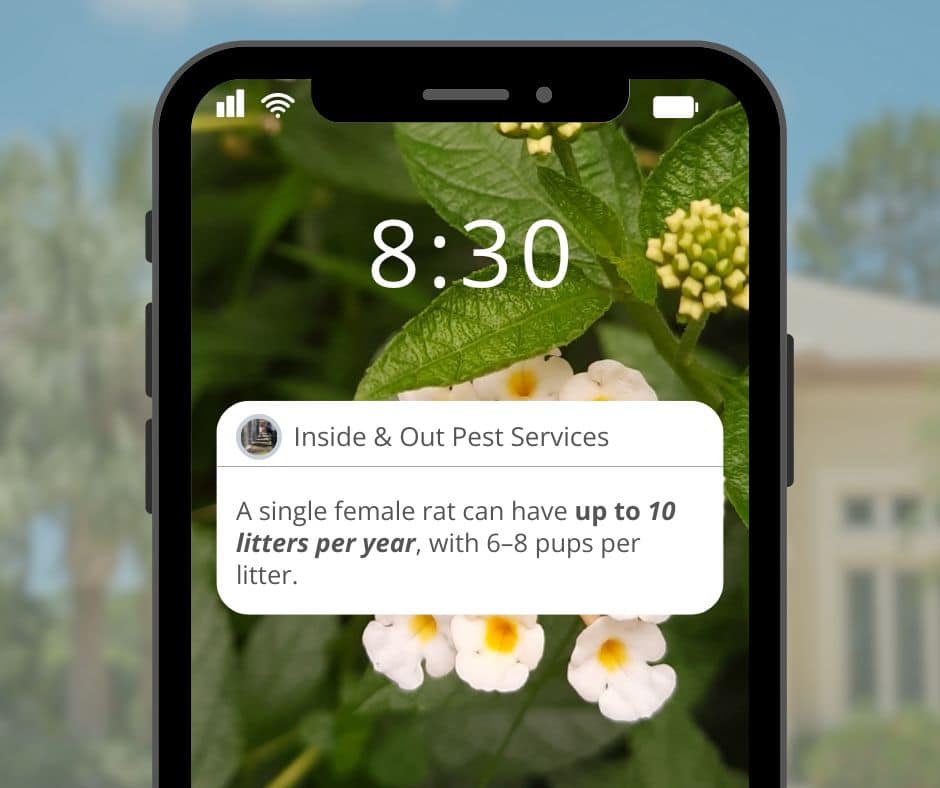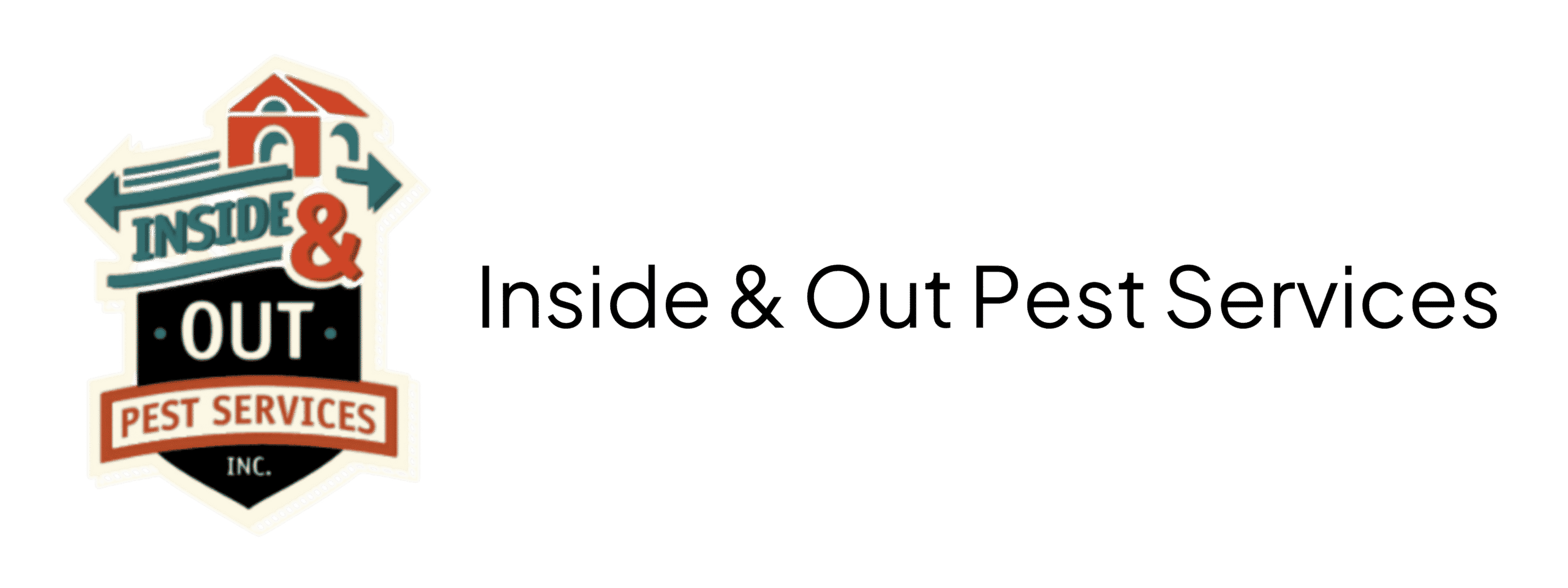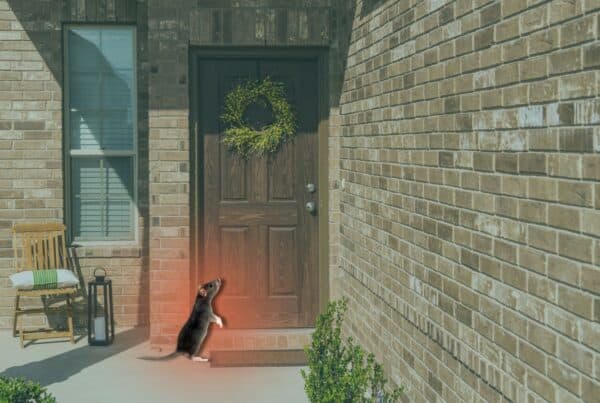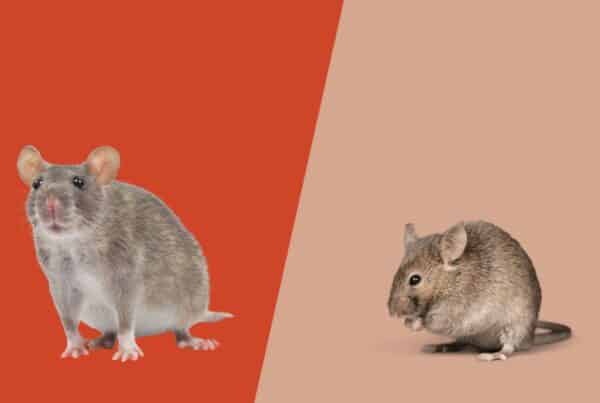If you hear something scratching in the walls, you’re not imagining things. Mice are excellent climbers and sneaky nesters. Once a mouse finds a way into, the inside of your wall becomes a cozy hideout.
Unfortunately, wall cavities also mean hidden droppings, chewed wires, and potential health risks. So how do you know for sure if there’s a mouse in the wall? And what can you do about it before things get worse?
Here’s what Jacksonville homeowners need to know.
Early Signs There’s a Mouse in the Wall
Mice don’t always leave obvious evidence. But if you pay close attention to patterns, there are a few key giveaways.

1. Noises at Night
Mice are nocturnal. If you’re hearing faint scratching, chewing, or rustling inside the walls after dark, there’s a good chance you’re not alone.
2. Unexplained Odors
A musky or ammonia-like smell could mean mouse urine. If the odor is strongest near baseboards, outlets, or vents, that’s often where mice are nesting.
3. Chewed Materials
Mice can gnaw through drywall, insulation, wiring, and plastic. You may notice shredded paper or packaging near walls, even if there’s no visible hole.
4. Droppings
Mouse droppings are small, dark, and pointed at both ends. If they’re appearing near the corners of rooms, under sinks, or behind appliances, the wall voids may be next.
5. Pet Behavior
Cats and dogs may sniff, scratch, or stare at walls more often when mice are active inside. Animals often sense movement or smells before we do.
6. Cold Air Leaks or Gaps
According to the University of California’s Integrated Pest Management Program, mice can squeeze through gaps as small as ¼ inch.
Wall entry points often start around plumbing, HVAC lines, or attic penetrations.
Why Mice Choose Walls for Nesting
Wall cavities offer everything a mouse needs to thrive: warmth, darkness, safety, and space to move around undetected.
Florida’s mild winters mean mice stay active longer. Once inside, they’ll build nests close to food and water, often staying hidden for weeks before making themselves known.
Nesting often happens near:
- Kitchens or pantries
- Bathrooms with plumbing access
- Laundry rooms
- Attics with insulation
Mice reproduce quickly. According to the CDC, a single female can have up to 10 litters per year, with 6–8 pups per litter. That means one mouse in the wall can turn into dozens if left unchecked.
Is It Mice or Something Else?
Many homeowners wonder if the sounds they’re hearing could be something else, like squirrels, rats, or even plumbing.
Here’s how mice typically compare:
| Pest | Sound Type | Time of Day | Other Clues |
| Mice | Light scratching, scurrying | Night | Small droppings, musky odor |
| Rats | Louder thumping, gnawing | Night | Larger droppings, chew marks on wood |
| Squirrels | Scratching, fast running | Day | Nesting sounds in attics or soffits |
| Plumbing Issues | Dripping, tapping | Anytime | No droppings or food debris present |
If you’re unsure, a pest professional can help identify the culprit quickly using tools like thermal imaging or moisture sensors.
What to Do if You Suspect a Mouse in the Wall
Step 1: Confirm the Activity
Spot tiny footprints by sprinkling flour or baking soda near baseboards and outlets. Look for droppings, listen at night, and monitor any chewed materials.
Step 2: Seal Off Entry Points
Blocking entry is critical. Check:
- Gaps around pipes
- Vents and dryer ducts
- Attic access points
- Foundation cracks
- Garage doors
Use steel wool, hardware cloth, or pest-grade sealant to close them. Avoid using just spray foam or caulk alone, as mice can chew right through.
Step 3: Clean Up Attractants
Mice are drawn to easy food and shelter. Inside and outside, make sure to:
- Store food in sealed containers
- Empty trash cans regularly
- Limit clutter (especially cardboard or paper storage)
- Keep pet food and water bowls clean overnight
Step 4: Avoid Over-the-Counter Repellents
Peppermint oil and sound machines may deter mild activity temporarily, but they rarely solve real infestations. Mice adapt quickly to new stimuli.
Step 5: Don’t Knock on the Wall
Many people tap on the wall to “flush out” the noise, but this can drive mice deeper or scare them into moving nests. Let a pro handle tracking.

What Happens if You Ignore It?
Even one mouse in the wall can cause:
- Electrical hazards – Mice chew wires, which can spark fires. Rodents cause up to 25% of unknown structure fires.
- Structural damage – Nesting and chewing weaken drywall, insulation, and wood framing.
- Health risks – Mice carry bacteria, viruses, and parasites. Droppings and urine can trigger allergies or spread disease like hantavirus or salmonella.
- Odor problems – Dead mice inside walls create strong decay odors that last for weeks.
- Infestation growth – If left alone, mice breed fast and spread to other parts of the home.
When to Call a Professional
If you’re hearing consistent scratching, finding droppings, or smelling something strange near the walls, it’s time to bring in expert help.
Inside & Out Pest Services serves Jacksonville and surrounding areas with mouse and rodent solutions tailored to your home’s layout. Our team:
- Identifies the nest location
- Seals access points
- Removes mice using safe, effective treatment
- Disinfects and deodorizes contaminated areas
- Offers long-term prevention options
DIY traps may catch a few mice, but they don’t stop the hidden nest or eliminate the real source. Professional-grade tools and inspection methods can save you time, money, and stress.
Related Questions
Are wall nests more dangerous than attic or garage nests?
Yes, because they’re closer to wiring, insulation, and living spaces. Wall nests are harder to detect and remove, which allows droppings and bacteria to spread silently.
Can mice get between floors in a two-story home?
Absolutely. Mice can travel vertically using wall voids, plumbing chases, and even HVAC ducts if gaps exist.
What should I do if I smell something dead in the wall?
Call a pest control company to inspect. Attempting to remove a dead mouse yourself may involve cutting into drywall or disturbing insulation, which can release bacteria or allergens.
Do mice return to the same nest once removed?
If the entry point isn’t sealed and food is still available, mice will return or new ones will take over the nest site. Sealing access and removing attractants is key.
Final Thoughts
A mouse in the wall is more than just an annoyance. It’s a sign your home may be vulnerable to deeper issues. Ones that can affect your health, safety, and structure if not handled quickly.
Don’t wait for the scratching to get louder or the smell to get worse. Let Inside & Out Pest Services inspect, remove, and protect your home the right way.
Book your service today and stop infestations where they start.



